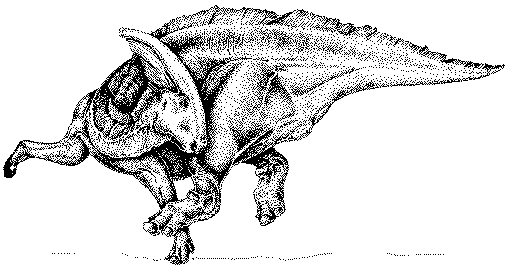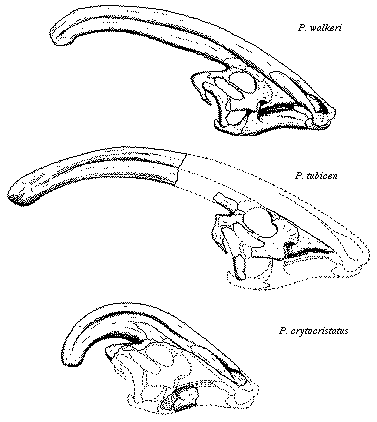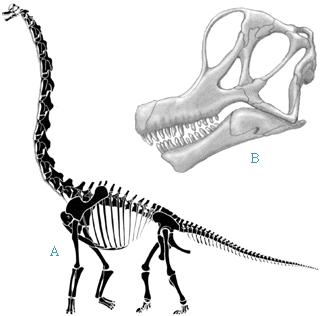| Creationist
Claim: The "dragons" in the Bible; Leviathan and Behemoth,
actually fit the description of Dinosaurs!
All too common
a claim made by creationists. Jeff Dykes (2000) states that:
The large sauropods (such as Brachiosaurus, Ultrasaurus, Seismosaurus, or Diplodicus) probably didn't live in marshes, but on the edge of forests where they could feed on pine cones, branches from pine trees, and occasionally rough grasses. Though, they may have spent much of their time near large bodies of water, it is unlikely they spent any amount of time submerged down in muddy water as some of the earlier scholars of the twentieth century postulated. The most logical assesment of these verses is that they are discribing a large crocodile. Crocodiles were very common to that part of the world, and the largest on record was 27 ft; a crocodile between 25 and 30 ft long would certainly fit this description. And as a side note, Brachiosaurus and Ultrasaurus are two completely different genera -- contrary to what is implied by the statement "Brachiosaurus or 'Ultrasaurus'," which gives the impression that "Ultrasaurus" is the Brachiosaur's nickname.
The problem here is that there is absolutely no evidence that dinosaurs breathed fire. "Strange protuberance with an internal cavity at the head" could refer to a number of dinosaurs: Parasaurolophus  
Images from http://www.nmmnh-abq.mus.nm.us/nmmnh/parasaur.html
So the animals' crest was actually a sounding chamber. The only other theories which were ever accepted in scientific circles state that:
 Brachiosaurus
had a large nasal passage at the top of its head, which was also once thought
to be used as a "snorkel". Scientists of the time thought of dinosaurs
a slow-witted, swamp-dwelling reptiles. It was supposed that it had to
live in the water to support its weight and hide from predators, with just
the top of its head sticking out of the water for air. Brachiosaurus
had a large nasal passage at the top of its head, which was also once thought
to be used as a "snorkel". Scientists of the time thought of dinosaurs
a slow-witted, swamp-dwelling reptiles. It was supposed that it had to
live in the water to support its weight and hide from predators, with just
the top of its head sticking out of the water for air.
Today's scientists
have a much different idea of how the creature lived - on land, in the
forests, defending itself against predators by rearing up on its hind legs
and then crushing its attacker by letting its massive bulk fall on top
of it, front limbs first. The large nasal passage at the top of its head
was probably used as a sounding chamber to emit mating calls. In any event,
Brachiosaurus' "strange protuberance with an internal cavity at
the head" was not used for breathing fire.
Dilophosaurus
|
|||
| References
CNN - After 75 million years, dinosaur 'speaks' [Online] Rick Lockridge / CNN (1997). Available: http://www.cnn.com/TECH/9712/05/dino.speaks/ [2000, September 23] Dinosaurs and the Bible [Online] J. Dykes (2000). Available: http://www.faithalone.com/dinosaurs.htm [2000, September 23] Parasaurolophus, A Strange Duckbill Dinosaur From New Mexico [Online] T. Williamson (1999) available: http://www.nmmnh-abq.mus.nm.us/nmmnh/parasaur.html [2000, September 23] |
 This
creature is probably one of the most "dragon-like" of all the dinosaurs.
It was roughlt forty feet in length, making it almost as long from head
to tail as Tyrannosaurus. While alive, it truly must have looked
like a two-legged dragon. Unfortunately for the creationists, the two "strange
protuberances", or crests, did not have any cavities to speak of -- let
alone cavities which could be used as "mixing chambers" for combustible
gasses.
This
creature is probably one of the most "dragon-like" of all the dinosaurs.
It was roughlt forty feet in length, making it almost as long from head
to tail as Tyrannosaurus. While alive, it truly must have looked
like a two-legged dragon. Unfortunately for the creationists, the two "strange
protuberances", or crests, did not have any cavities to speak of -- let
alone cavities which could be used as "mixing chambers" for combustible
gasses.